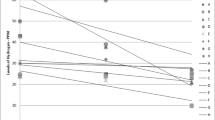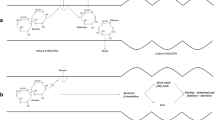Résumé
Le rôle sur le reflux gastro-œsophagien (RGO) des facteurs diététiques, y compris des aliments gras, reste controversé à l’exception de certaines boissons et divers mets épicés. D’autre part, les hydrates de carbone non digestibles ou mal digérés pourraient jouer un rôle sur le reflux via la fermentation colique. Une étude récente a montré un effet des fructo-oligo-saccharides (FOS) sur les relaxations transitoires du sphincter œsophagien inférieur, l’exposition œsophagienne acide et les scores symptomatiques de RGO. On ignore tout du rôle éventuel du lactose chez les sujets intolérants.
Les auteurs ont réalisé chez des sujets malabsorbants une étude ouverte préliminaire relative au rôle du lactose sur la sévérité des symptômes de RGO et leur consommation libre d’antiacides au cours de deux périodes respectivement avec apports élevés et limités en lactose. Pour chacun des paramètres, une différence significative entre les deux périodes a été observée. Ces résultats incitent à des investigations ultérieures contrôlées, compte tenu des la perspective d’une approche thérapeutique originale lorsque ces deux pathologies sont associées.
Summary
The role of dietary factors, even of fatty meals, on GERD remains debatable, except for some beverages and spicy foods. Conversely, indigestible carbohydrates by the way of colonic fermentation could be a responsible factor of GERD. A recent study has shown an effect of fructooligo-saccharides (FOS) on transient lower esophageal sphincter relaxations (TLESR), esophageal acid exposure and the symptom score of GERD. Nothing is known about the role of lactose in malabsorbers.
The authors performed a preliminary open study about the role of lactose on GERD symptoms severity and free consumption of antacids in lactose malabsorbers during two periods respectively with high and low lactose intake. For each parameter a significant difference between the two periods has been observed (p < 0.001). These results are calling for further investigations especially with regards to a possible original therapeutic approach when both clinical problems are associated.
Similar content being viewed by others
Références
Richter JE. Heartburn, dysphagia, odynophagia and other esophageal symptoms. In: Sleisenger, MH, Fordtran, JS eds. Texbook of gastrointestinal disease. Volume 1, 5th ed Philadelphia, Saunders 1993: 378–401.
Holloway RH, Lyrenas E, Ireland A, Dent JJ. Effect of intraduodenal fat on lower oesophageal sphincter function and gastro-oesophageal reflux. Gut 1997; 40: 449–53.
Pehl C, Waizenhoefer A, Wendl B, Schmidt T, Schepp W, Pfeiffer A. Effect of low and high fat meals on lower esophageal sphincter motility and gastroesophageal reflux in healthy subjects. Am J Gastroenterol 1999; 94: 1192–6.
Penagini R, Mangano M, Bianchi PA. Effect of increasing the fat content but not the energy load of a meal on gastro-oesophageal reflux and lower oesophageal sphincter motor function. Gut 1998; 42: 330–3.
Penagini R. Fat and gastro-oesophageal reflux disease. Eur J Gastroenterol Hepatol 2000; 12: 1343–5. Review.
Piche T, Bruley des Varannes SB, Sacher-Huvelin S, Holst JJ, Cuber JC, Galmiche JP. Colonic fermentation influences lower esophageal sphincter function in gastroesophageal reflux disease. Gastroenterology 2003; 124: 894–902.
Ropert A, Cherbut C, Roze C, Le Quellec A, Holst JJ, Fu-Cheng X, Bruley des Varannes S, Galmiche JP. Colonic fermentation and proximal gastric tone in humans. Gastroenterology 1996; 111: 289–96.
Wang X, Gibson GR. Effects of thein vitro fermentation of oligofructose and inulin by bacteria growing in the human large intestine. J Appl Bacteriol 1993; 75: 373–80.
Feldman M, Barnett C. Relationships between the acidity and osmolality of popular beverages and reported postprandial heartburn. Gastroenterology 1995; 108: 125–31.
Angus RM, Sambrook PN, Pocock NA, Eisman JAA. A simple method for assessing calcium intake in Caucasian women. J Am Diet Assoc 1989; 89: 209–14.
Lami F, Callegari C, Tatali M, Graziano L, Guidetti C, Miglioli M, Barbara L. Efficacy of addition of exogenous lactase to milk in adult lactase deficiency. Am J Gastroenterol 1988; 83: 1145–9.
Boulant J, Mathieu S, D’Amato M, Abergel A, Dapoigny M, Bommelaer G. Cholecystokinin in transient lower oesophageal sphincter relaxation due to gastric distension in humans. Gut 1997; 40: 575–81.
Author information
Authors and Affiliations
About this article
Cite this article
Mainguet, P., Moyersoen, A.M., Rutot, M. et al. Existe-t-il une relation entre intolérance au lactose et reflux gastro-œsophagien? Etude préliminaire. Acta Endosc 34, 305–310 (2004). https://doi.org/10.1007/BF03004259
Issue Date:
DOI: https://doi.org/10.1007/BF03004259




